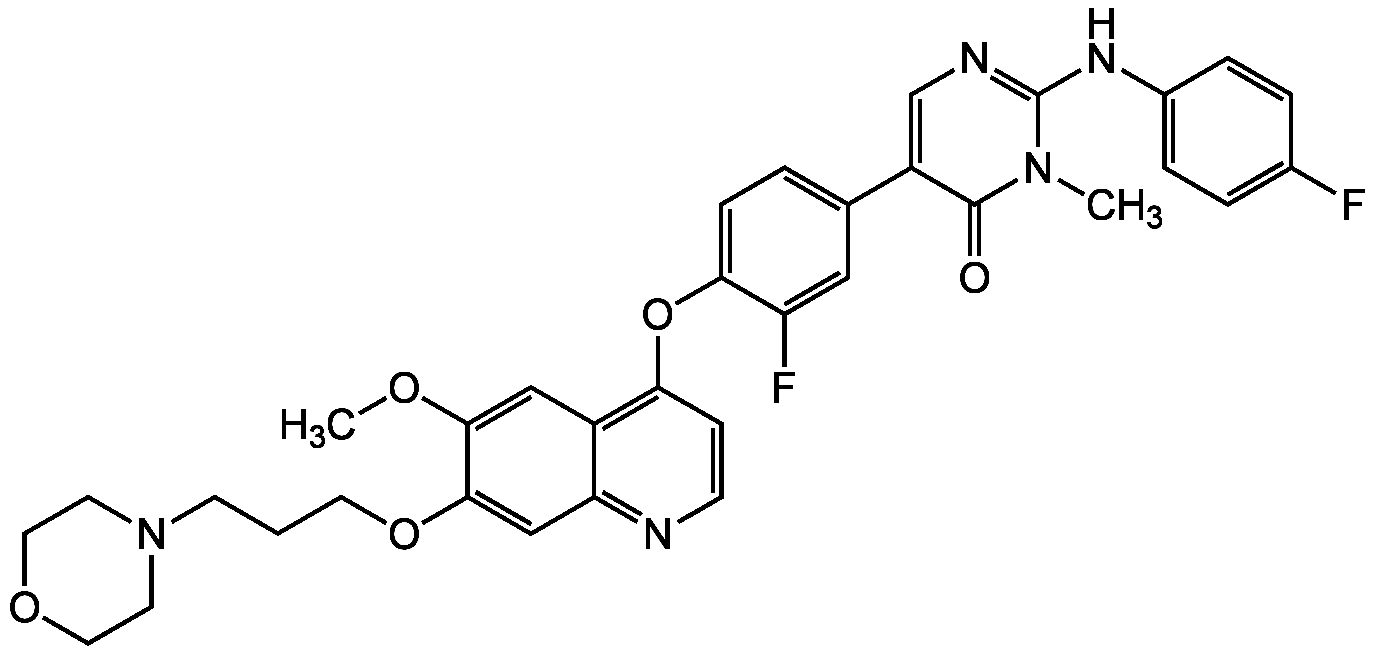AMG-51
Product Code:
SYN-1111
SYN-1111
Regulatory Status:
RUO
RUO
Shipping:
-20°C
-20°C
No additional charges, what you see is what you pay! *
| Code | Size | Price |
|---|
| SYN-1111-M100 | 100 mg | Enquire |
Quantity:
| SYN-1111-M050 | 50 mg | Enquire |
Quantity:
| SYN-1111-M001 | 1 mg | £233.00 |
Quantity:
| SYN-1111-M005 | 5 mg | £461.00 |
Quantity:
| SYN-1111-M010 | 10 mg | £719.00 |
Quantity:
Prices exclude any Taxes / VAT
Stay in control of your spending. These prices have no additional charges, not even shipping!
* Rare exceptions are clearly labelled (only 0.14% of items!).
* Rare exceptions are clearly labelled (only 0.14% of items!).
Multibuy discounts available! Contact us to find what you can save.
This product comes from: Switzerland.
Typical lead time: 7-10 working days.
Contact us for more accurate information.
Typical lead time: 7-10 working days.
Contact us for more accurate information.
- Further Information
- Documents
- References
- Related Products
- Show All
Further Information
Alternate Names/Synonyms:
AMG51
Appearance:
Solid.
CAS:
890019-63-3
EClass:
32160000
Form (Short):
liquid
InChi:
InChI=1S/C34H33F2N5O5/c1-40-33(42)26(21-38-34(40)39-24-7-5-23(35)6-8-24)22-4-9-30(27(36)18-22)46-29-10-11-37-28-20-32(31(43-2)19-25(28)29)45-15-3-12-41-13-16-44-17-14-41/h4-11,18-21H,3,12-17H2,1-2H3,(H,38,39)
InChiKey:
ONSZEUCTVQJHOZ-UHFFFAOYSA-N
Long Description:
Chemical. CAS: 890019-63-3. Formula: C34H33F2N5O5. MW: 629.7. c-Met kinase is the receptor for hepatocyte growth factor (HGFR). Primarily expressed on epithelial and mesenchymal cells its normal function is associated with wound healing, liver regeneration and embryo development. However, dysregulation of c-Met through overexpression, gene amplification, mutation or a ligand-dependent autocrine/paracrine loop is associated with tumorigenesis. c-Met dysregulation in human cancer patients is typically associated with a poor prognosis, aggressive disease, increased metastasis and shortened patient survival. Targeting the hepatocyte growth factor/c-Met signalling pathway as a means of cancer therapy has, therefore, become increasingly popular with a number of different therapeutic approaches undergoing clinical trials. AMG-51 represents a modified novel pyrimidone 7 compound that demonstates good effectiveness against c-Met with few off target effects at set concentrations. AMG-51 shows the enzyme selectivity of c-Met with a Ki of 4.9nM, with off target proteins such as IGFR with a Ki of 22nM, Ron with a Ki of 28nM, and KDR with Ki of 139nM.
Molecular Formula:
C34H33F2N5O5
Molecular Weight:
629.7
Package Type:
Plastic Vial
Product Description:
c-Met kinase is the receptor for hepatocyte growth factor (HGFR). Primarily expressed on epithelial and mesenchymal cells its normal function is associated with wound healing, liver regeneration and embryo development. However, dysregulation of c-Met through overexpression, gene amplification, mutation or a ligand-dependent autocrine/paracrine loop is associated with tumorigenesis. c-Met dysregulation in human cancer patients is typically associated with a poor prognosis, aggressive disease, increased metastasis and shortened patient survival. Targeting the hepatocyte growth factor/c-Met signalling pathway as a means of cancer therapy has, therefore, become increasingly popular with a number of different therapeutic approaches undergoing clinical trials. AMG-51 represents a modified novel pyrimidone 7 compound that demonstates good effectiveness against c-Met with few off target effects at set concentrations. AMG-51 shows the enzyme selectivity of c-Met with a Ki of 4.9nM, with off target proteins such as IGFR with a Ki of 22nM, Ron with a Ki of 28nM, and KDR with Ki of 139nM.
Purity:
>95%
Solubility Chemicals:
Soluble in DMSO.
Transportation:
Non-hazardous
UNSPSC Category:
Protein Kinase Modulators
UNSPSC Number:
12352200
Use & Stability:
Stable for at least 2 years after receipt when stored at -20°C.
Documents
References
Design, synthesis, and biological evaluation of potent c-Met inhibitors: N.D. D'Angelo, et al.; J. Med. Chem. 51, 5766 (2008)
Related Products
| Product Name | Product Code | Supplier | CP-724714 | SYN-1033 | AdipoGen Life Sciences | Summary Details | |||||||||||||||||||||||||||||||||||||||||||||||||||||||||||||||||||||||||||||||||||||||||||||
|---|---|---|---|---|---|---|---|---|---|---|---|---|---|---|---|---|---|---|---|---|---|---|---|---|---|---|---|---|---|---|---|---|---|---|---|---|---|---|---|---|---|---|---|---|---|---|---|---|---|---|---|---|---|---|---|---|---|---|---|---|---|---|---|---|---|---|---|---|---|---|---|---|---|---|---|---|---|---|---|---|---|---|---|---|---|---|---|---|---|---|---|---|---|---|---|---|---|---|---|
| JNJ-38877605 | SYN-1047 | AdipoGen Life Sciences | Summary Details | ||||||||||||||||||||||||||||||||||||||||||||||||||||||||||||||||||||||||||||||||||||||||||||||||
| AMG-1 | SYN-1143 | AdipoGen Life Sciences | Summary Details | ||||||||||||||||||||||||||||||||||||||||||||||||||||||||||||||||||||||||||||||||||||||||||||||||
| AMG-458 | SYN-1144 | AdipoGen Life Sciences | Summary Details | ||||||||||||||||||||||||||||||||||||||||||||||||||||||||||||||||||||||||||||||||||||||||||||||||
| MK-2461 | SYN-1149 | AdipoGen Life Sciences | Summary Details | ||||||||||||||||||||||||||||||||||||||||||||||||||||||||||||||||||||||||||||||||||||||||||||||||



